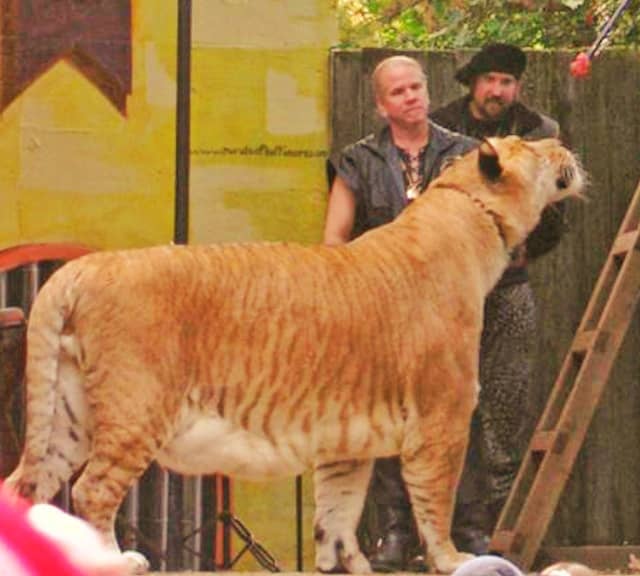Lion & Tiger Hybridization
The lion and tiger Hybridization is the process in which both lion and tiger are successfully crossbred to produce an offspring. Such offspring are called hybrid offspring. Furthermore; within such hybridization process, if male is a lion and female is a tiger (tigress) then the hybrid offspring is termed as a liger. Vice-versa; if the male is a tiger and the female is a lion (lioness) then the hybrid offspring is called a tigon.
The lions and tigers' hybridization involves interbreeding of both animals to produce the hybrid offspring i.e., ligers and tigons.
As of today (2019); this hybridization is at its peak as we are seeing more numbers of ligers (about 100) and tigons across various zoos, animal sanctuaries, safari parks and some other private facilities. However; the questions do emerge that whether both of these species are genetically inter-related enough to produce the viable offspring? Whether the offspring are fertile or sterile? and what about the success and benefits of this lion and tiger hybridization?
Lion & Tiger Hybridization
Produces Hybrid Offspring
Lion & Tigeress Hybridization
Produces Ligers
Tiger & Lioness Hybridization
Produces Tigons
Loin & Tiger Hybridization
Means Crossbreeding Both Cats
Total Lion & Tiger Hybrids
More than 100
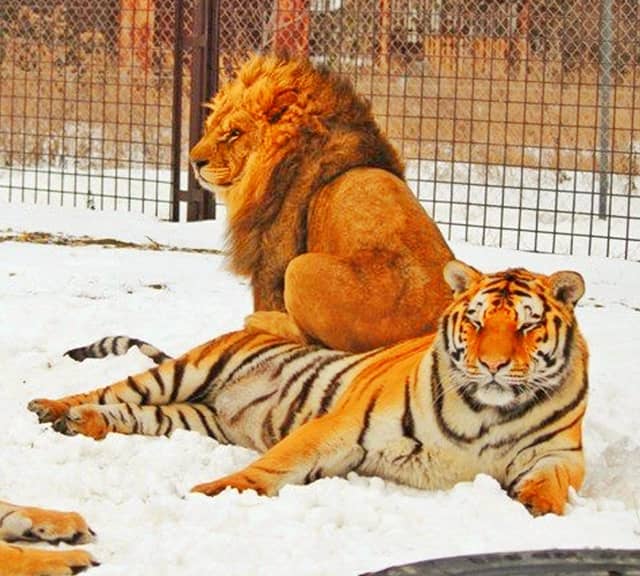
First of all the hybridization of lions and the tigers is a viable process because both lions and tigers are genetically very similar. Without a doubt lions possess tiger genes while tigers possess lion genes. As a result of that both of these big cats do possess a lot of common physical characteristics and instincts. Furthermore; both of these big cats have equal numbers of chromosomes i.e., 38 chromosomes. Therefore; hybridization seems pretty much on the cards and when a ligers or a tigons are born, the offspring are not only viable and free of genetic defects but also possess 38 chromosomes just like their parents.
The hybridization in between a lion and a tiger is viable because both species are genetically very similar. Furthermore; both species have equal numbers of chromosomes.
Both ligers and tigons inherit 19 chromosomes from lions and 19 from tigers. This makes their chromosome numbers equal to 38. However; if the chromosome numbers of the parents are different, they may not be able to produce a viable offspring and a lot of genetic issues could have occurred as well for the resultant hybrids.
Lion & Tiger Hybridization
Viable & Healthy
Lions & Tigers are
Genetically Similar
Lions & Tigers Chromosomes
38 Chromosomes Each
Hybrid Offspring Chromosomes
38 Chromosomes Each
Liger Chromosomes
19 Lion + 19 Tiger
Result
Lion & Tiger Hybridization is Successful
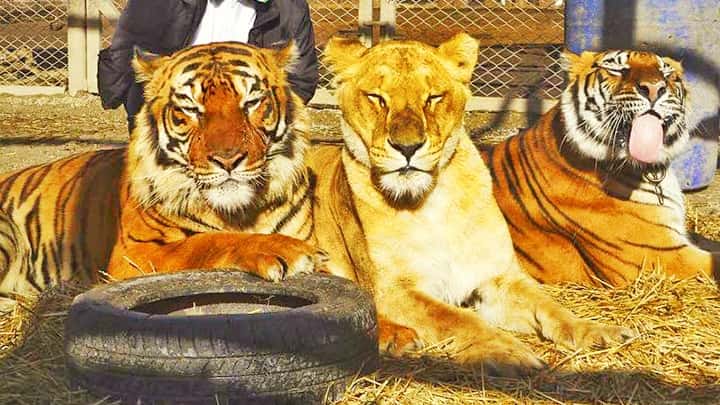
The biggest question about the hybrid offspring is their ability to reproduce when they become adults. Most of the hybrid animals are thought to be sterile because in most of the cases their parents' chromosome numbers do not match with one another for the successful meiosis. If the chromosome numbers of parents involving hybridization are different; the offspring are very likely to be sterile. Mules are perfect example in this regard which are born through donkey and horse hybridization. A mule has 63 chromosomes while donkeys have 62 chromosomes and horses have 64 chromosomes.
Since lions and tigers have equal numbers of chromosomes; there is a greater probability that their offspring will not be sterile but rather fertile. As a matter of fact; the female ligers and tigons are both fertile.
However; in the case of the lion and tiger hybridization, the parents (lion or tiger) are not only inter-related but they also have equal numbers of chromosomes. Therefore; there is a greater probability that their offspring will be fertile. This is the key reason that the female ligers and the female tigons are both fertile and successfully produce more hybrid offspring.
Hybrid Offspring are
Considered Sterile
Lion & Tiger Hybrids
Are Fertile
Fertile Hybrids Require
Equal Chromosomes of Parents
Both Lions & Tigers
Have Equal Chromosomes
Result
Lion and Tiger Hybrids are Fertile
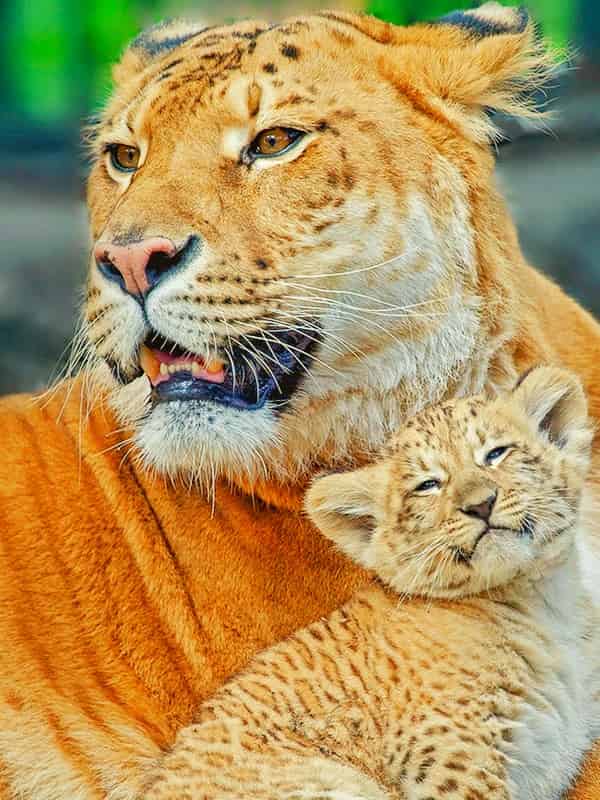
As a matter of fact both female ligers and female tigons have over the years they have successfully given births to Li-ligers, Ti-ligers, Li-tigon and Ti-tigons. The Li-ligers and Li-tigons have the male lions as their father while Ti-ligers and Ti-tigons have male tigers as their father. Even further; the female Li-ligers are also capable of successfully giving births to the Li3-Ligers.
The hybrid offspring of the lions and tigers can successfully produce the Li-ligers, Ti-ligers, Li-tigons and the Ti-tigons. Furthermore; Li3-Ligers and Ti3-ligers are also produced
Therefore; in the lion and tiger hybridization; a continuous chain of fertile offspring are always there for the female hybrids while male hybrids seem to be sterile. Male hybrids are sterile because not a single one of them have successfully mated with any female liger, tigress or a lioness.
Li-Ligers are produced via
Lion & Liger Hybridization
Li3-Ligers are produced via
Lion & Li-Liger Hybridization
Ti-Ligers are produced via
Tiger & Liger Hybridization
Ti3-Ligers are Produced via
Tiger & Ti-Liger Hybridization
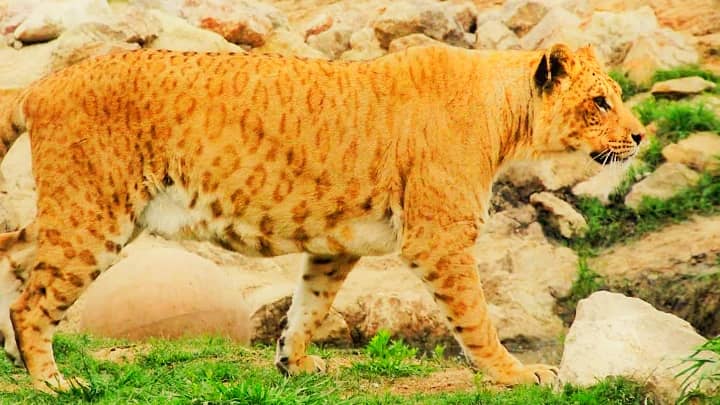
After hybridization of lions and tigers, the resultant offspring are called the first generation hybrids. However; if these resultant offspring successfully interbreed to produce their young ones they may become some unique animal species. But if after hybridization only females successfully crossbreed as in the case of the ligers and the tigons, their offspring are termed as the second generation hybrids. Onward; if females of the second generation hybrids successfully crossbreed they are called the third generation hybrids.
In the lion and tiger hybridization; the ligers and the tigons are the first generation hybrids, the Li-ligers, Ti-ligers, Li-tigons and Ti-tigons are the second generation hybrids while Li3-ligers and Ti3-ligers are the third generation hybrids.
This way there is a continuous cycle of hybrid evolution through lion and tiger hybridization. In the case of the lion and the tiger hybridization, the offspring such as ligers and tigons are called first generation of hybrids while the Li-ligers, Ti-ligers, Li-tigons and Ti-tigons are called the second generation hybrids. Li3-ligers and Ti3-Ligers are the third generation hybrids.
Ligers & Tigons are
First Generation of Hybrid Big Cats
Li-Ligers & Ti-Ligers are
Second Generation of Hybrid Big Cats
Li-Tigons & Ti-Tigons are
Second Generation of Hybrid Big Cats
Li3-Ligers & Ti3-Ligers are
Third Generation of Hybrid Big Cats
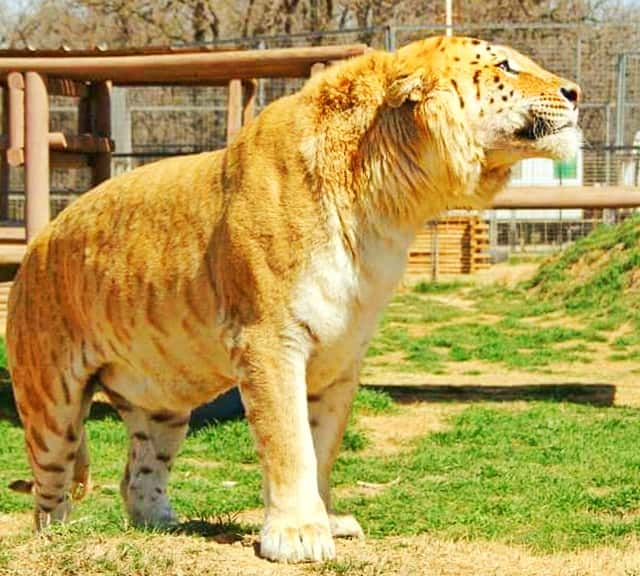
The origin of the lion and tiger hybridization within captivity can be traced back to at least 2 centuries ago, in 1799. At that time a Bengal tigress was successfully crossbred with an Asiatic lion to produce 3 healthy liger offspring. Those liger offspring were later transported to England as a gift for the English Queen. Onward; the hybridization of the lions and tigers has been a continuous phenomenon until now.
In captivity, the first ever hybridization of the lions and tigers took place in 1799. In the wild there is a greater possibility that these two big cats used to hybridized thousands of years ago.
On the other hand; it is believed that the lion and tiger hybridization was also a common phenomenon in the wild as well. This happened thousands of years ago. At that time both lions and tigers used to have a lot of overlapping territories which paved the way for hybridization of the lions and tigers. The fact that the lions have tiger genes and the tigers have lion genes shows that these two species used to hybridized thousands of years ago. According to the journal of Science Advances, both lions and tigers share at least 13000 common genomes.
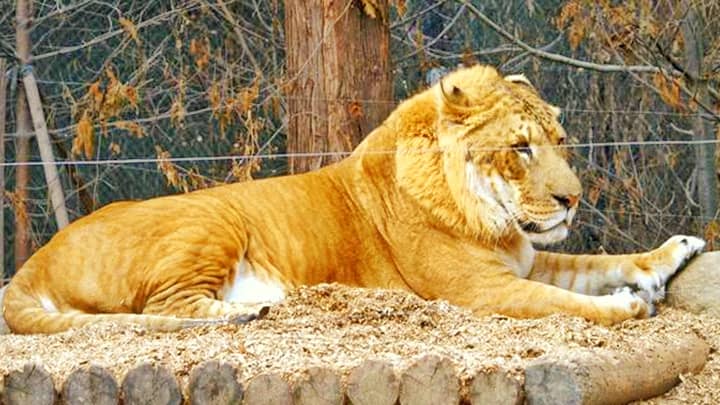
Some people have speculated that the hybridization of the lions and tigers is not viable and the resultant offspring have health issues. This is absolutely wrong as we have gone through almost 100 ligers across the globe in different zoos and safari parks and have always found ligers to be healthy and living a normal life.
The offspring produced through lion and tiger hybridization are always health and genetically perfect. All speculations about their health are merely the myths.
Ligers are free of any genetic defects and health issues. As mentioned earlier the ligers have complete DNA because their parents lions and tigers have equal numbers of chromosomes (38 chromosomes). Ligers also have 38 chromosomes in which 19 are from the tigress and 19 are from the lion. The same is true about other hybrids such as tigons, Li-ligers, Ti-ligers, Li-tigons, Ti-tigons and Li3-ligers and Ti3-ligers.
Lion & Tiger Hybridization Speculations
Ligers are not Healthy
Ligers and Tigons are
Absolutely Healthy & Physically Fit
Lion & Tiger Hybrid Offspring
Live a normal span of Life
Lion & Tiger Hybrid Offspring are
Free of Health Issues
Lion & Tiger Hybrid Offspring are
Genetically Perfect
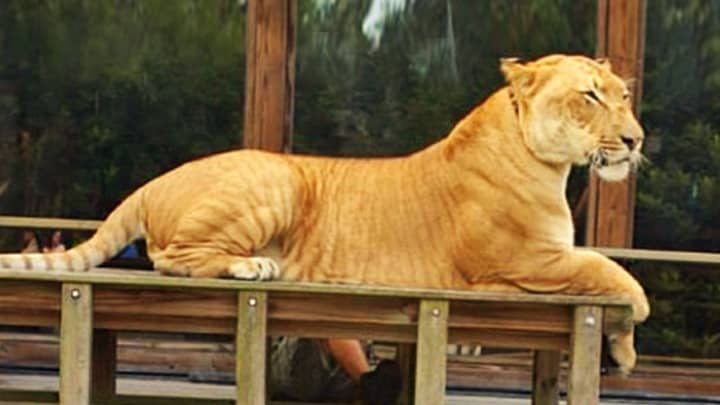
Lastly; the lion and tiger hybridization is there to stay because it offers a lot of conservation value for the other endangered big cat species such as the lions, tigers, leopards, cheetahs and jaguars etc. According to Dr. Bhagavan Antle, his ligers act as the brand ambassadors for the big cat species. Ligers create awareness and interest about the evolutionary biology of the big cat species.
The lion and tiger hybridization offer a lot of conservation benefits for the endangered big cat species. Ligers create huge interest and attention level among people and both of these factors are directly related to the conservation of the big cats.
Furthermore; this also increases the interest of the common people towards big cats and their conservation. This takes us to conclude that the hybridization of lion and tigers take us to the common goal which is conservation of the big cats in the wild.
